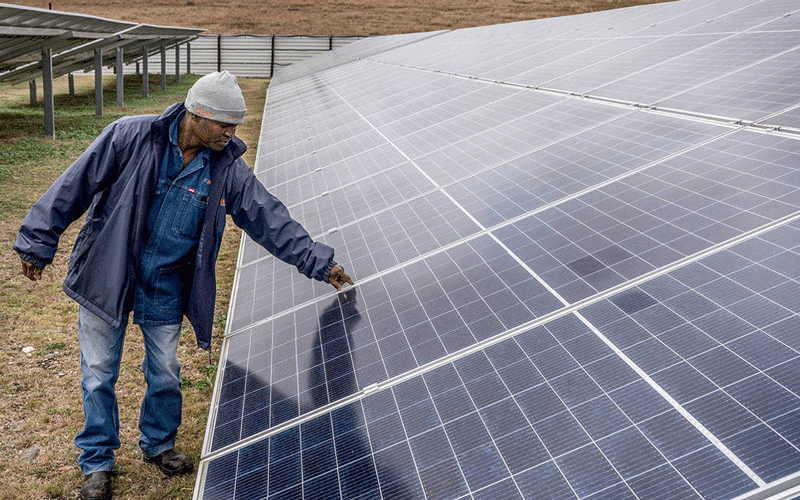
IN Zimbabwe, the mining and heavy manufacturing sectors are pivotal to the nation’s economic health, contributing significantly to its gross domestic product (GDP) and foreign exchange earnings.
However, these industries are energy-intensive and have historically relied on the national grid for power, which has been plagued by unreliability and shortages.
Speculations have suggested that the government intends to introduce a policy that mandates these companies to generate their power, possibly as a hybrid model utilising less of the national grid, as a strategic move that aims to alleviate the pressure on the national grid while promoting self-sufficiency and sustainability within these critical sectors.
While this is still an unofficial proclamation, it still calls for an impact assessment. The country has been suffering from electricity shortages for a long time, mainly relying on a hydro-electric power generation plant constructed decades ago.
Despite having a small manufacturing industry, the power utility has attributed the lack of power in households to manufacturing and mining industries that operate heavy machinery. As the nation braces for growth in this sector, sustainability of power provision emerges topical. Nonetheless, existing companies that operate heavy machinery have, for some time, registered financial losses induced by either high power costs or high-power outages which impact production, or both.
Recently, Proplastics reported that it suffers energy costs of US$0,23/kw, compared to a regional average of US$0,10/kw.
Therefore, a policy that directs heavy manufacturing and mining companies to establish power generation facilities on their premises appears viable from this perspective. From a national perspective, this policy could be transformative.
As the national grid experiences relief from major consumers of electricity, a more stable power availability for other sectors and residential consumers will ensue, potentially reducing the frequency and duration of power outages that have hampered economic activities and daily life.
- Mavhunga puts DeMbare into Chibuku quarterfinals
- Bulls to charge into Zimbabwe gold stocks
- Ndiraya concerned as goals dry up
- Letters: How solar power is transforming African farms
Keep Reading
Moreover, this shift will catalyse a broader adoption of renewable energy sources as companies seek cost-effective utilities, mainly solar plants.
Therefore, the integration of renewable energy into the nation’s energy mix would not only enhance energy security but also contribute to environmental conservation efforts by reducing carbon emissions.
For the mining and heavy manufacturing companies themselves, the implications of this policy are multifaceted. On one hand, there is the undeniable burden of capital investment required to establish power generation capabilities.
This entails the construction of new facilities, procurement of equipment, and installation of infrastructure, all of which demand substantial financial resources. The payback period for such investments would depend on various factors including the scale of operations, choice of technology, and prevailing energy prices.
However, once operational, these self-generation systems could lead to significant savings on energy costs in the long run. Companies would no longer be subject to fluctuating electricity tariffs imposed by utility providers, and those opting for renewable energy sources could benefit from lower operational costs associated with solar or wind power.
It is imperative to note that the alternative sources of power are not as sufficient to power the heavy machinery. For example, a company may opt for solar power which relies on the sun for energy.
Proplastics is one such company, which seeks to commission its solar plant within the next two months. Nonetheless, the company has highlighted that this facility will help power the machinery for some hours during the day before fully reverting to the national grid for overnight production.
This is because heavy machineries are hardly powered off and run for 24 hours of the day. This means such a power source will cut energy costs by at most 30%, typically. In line with the above, the operational independence afforded by self-generation of power may rather be overstated.
However, we should not take away the underlying fact that this move allows companies to gain control over a critical aspect of their operations, ensuring a consistent power supply that is not subject to the vagaries of the national grid, subject to managerial efficiency in running-time allocation.
This reliability could translate into improved operational efficiency and productivity, as processes would no longer be disrupted by power cuts, to a greater extent. Furthermore, in certain instances, companies operating in Zimbabwe could potentially generate additional revenue by selling excess power back to the grid or neighbouring businesses, creating new income streams.
However, this policy is not without its challenges. The initial outlay for setting up independent power generation facilities could be prohibitive for smaller companies or those with limited financial reserves.
There is also the matter of technical expertise required to operate and maintain these systems. Companies may need to invest in training for existing staff or recruit specialists with experience in energy management and power generation, which is a further running cost adding to the initial capital outlay.
These costs will have a significant bearing on the payback. In conclusion, while the policy mandating self-power generation for mining and heavy manufacturing companies in Zimbabwe presents significant opportunities for both the nation and the companies involved, it also poses challenges that must be carefully navigated.
The potential benefits in terms of enhanced power availability for the nation and cost savings for the companies are compelling.
However, considerations around capital investment, technical expertise, and operational logistics will be crucial in determining the success of this policy initiative.
Equity Axis is a financial media firm offering business intelligence, economic and equity research.
- The article was first published in its latest weekly newsletter, The Axis.






